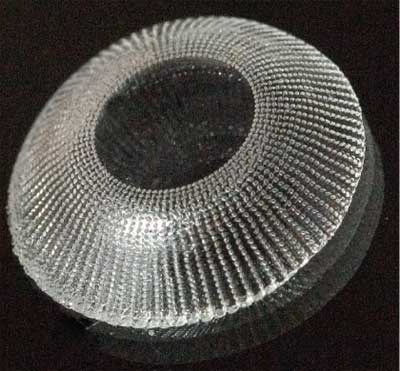Stanford researchers have created a prosthetic cornea that they believe is less likely to be rejected by the human eye. The prosthetic is made from a new nutrient-permeable hydrogel material that can hold a water content of 80%comparable to human corneal tissue.

The new hydrogel (called Duoptix) is actually two interwoven hydrogel networks. Think of a 3-D fishnet, says lead researcher Curtis Frank, Ph.D., professor of chemical engineering. Its a strong, stretchy material. The first network consists of polyethylene glycol molecules, which resist superficial buildup of protein. The second network is made of polyacrylic acid molecules, which makes Duoptix super absorbent.
The researchers task: convert the hydrogel material into a highly-biocompatible artificial cornea. The resulting design, a disc with a smooth, clear center and perforated edges, allows cells to bind to the disc, join it to the biological tissue with collagen secretions, and cover it with a layer of epithelial cells. This prosthetic is the most biomimetic to date, the researchers say.
Currently, the prosthetic is being tested in animals in eight-week trials. Thus far, there have been no complications, according to the research team.
Vol. No: 143:11Issue:
11/15/2006

